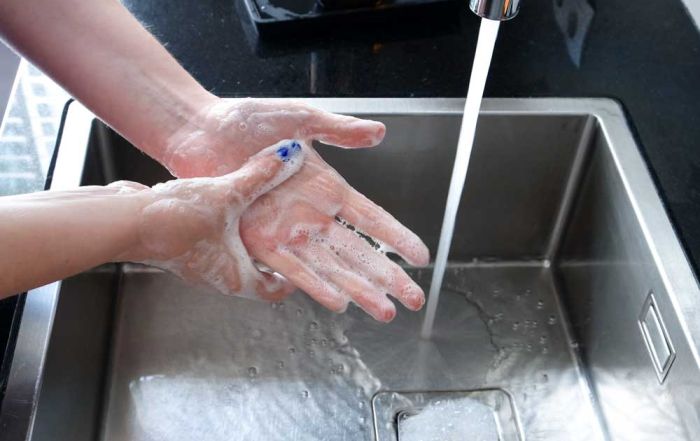Keeping Food Safe While Serving Outdoors
This afternoon I met some friends for lunch and as I drove through our beautiful downtown area in Manhattan, KS, I noticed that many people were taking advantage of the gorgeous weather and dining outside with friends. For our local community – outdoor dining is one of the remnants of COVID that we actually have come to enjoy on beautiful days. With spring in full swing and summer just around the corner, many foodservice operations are taking advantage of the warm weather by offering outdoor dining options.
Outdoor dining can be a great way to attract customers and increase revenue. Of course, we see this in restaurants, but we also see it in schools through the summer meal program. While the venues and style of service are a bit different, food safety must remain core to these activities. Here are some tips for keeping food safe while serving outdoors.
- Keep food at the right temperature.
- When serving food outdoors, it is important to keep hot foods hot and cold foods cold to prevent the growth of bacteria. If catering off-site events and/or serving outdoor buffets, it is vital to use chafing dishes, warming trays, insulated coolers, and ice baths to keep hot food at or above 135°F or cold food at or below 41°F. Monitor food temperatures regularly with a calibrated food thermometer to ensure that they stay within the safe temperature range.
Outdoor dining can be a great way to attract customers and increase revenue…but, food safety must remain core to these activities.
- Protect food from pests.
- Pests such as flies, bees, and ants can be a major problem when serving food outside. Make use of food covers, mesh netting, or other barriers to protect food from airborne insects. Keep food covered when not in use and store it in sealed containers to prevent pests from accessing it.
- Practice good hygiene
- I’ve often found that when our employees get outside the walls of our foodservice operation, they sometimes forget the basics of proper hand hygiene and sanitation. It is vital to remember the basics of hand hygiene – especially when you may not have handwashing stations as easily accessible as you do in your normal business. Proper hand hygiene is critical to preventing the spread of foodborne illnesses. Make sure that staff members wash their hands frequently and thoroughly. Provide hand sanitizer stations for customers and staff members to use and encourage them to use them often.
- Control food waste
- Ten years ago, I would have likely argued that food waste was not a food safety issue. But it can be in this case because food waste can attract pests and if not stored appropriately can be a breeding ground for pathogenic bacteria on those warm and sunny days. When serving food outdoors, use smaller serving portions and limit the amount of time that food is left out. Store excess food in sealed containers and dispose of it promptly.
- Plan for inclement weather
- Inclement weather, especially in the Midwest where I live, can pose a challenge when serving food outdoors. Plan ahead by having a backup plan in case of rain or other weather-related events. Use tents or other shelters to protect food and customers from the elements and have a plan for quickly moving food and equipment indoors if necessary.
Last, but certainly not least – have a plan in general! Don’t just decide mid-morning to serve lunch outdoors. As the old saying goes, failing to plan is planning to fail (or something like that). Serving food outdoors can be a great way to attract customers and increase revenue, but it also requires special attention to food safety. Risk Nothing.
READ MORE POSTS
Hand sinks: Often Taken for Granted, but an Essential Part to Effective Hand Hygiene
Late in January, I received a question about hand sinks in a foodservice operation. The question pertained to school staff (teachers and aides) who were using a hand washing sink in the school kitchen. The question came as a matter of who was allowed access to the kitchen to use the sink, but the question itself caused me to go down a rabbit hole of requirements for hand washing sinks in foodservice operations.
Hot off the Press: The 2022 Model Food Code has been Released! Part Two.
Earlier in the month, we started a discussion about the changes to the 2022 Food Code. If you missed that post, late in December 2022, the Food and Drug Administration released the 2022 Food Code and I wanted to highlight a few of the changes that have been made to the code.
Hot off the Press: The 2022 Model Food Code has been Released! Part One.
It has finally arrived! Yes, the new year has arrived – but I was not referring to it. I was referring to the new 2022 Model Food Code (10th edition) that has been released by the Food and Drug Administration. I thought I might take this blog and the next blog to discuss some of the changes that have been made to the Food Code that you might see coming your way in the next few years.
Is a Food Safety Culture on your New Year’s Resolutions List?
We hope you all had a wonderful Holiday season and are getting ready for a great new year!










